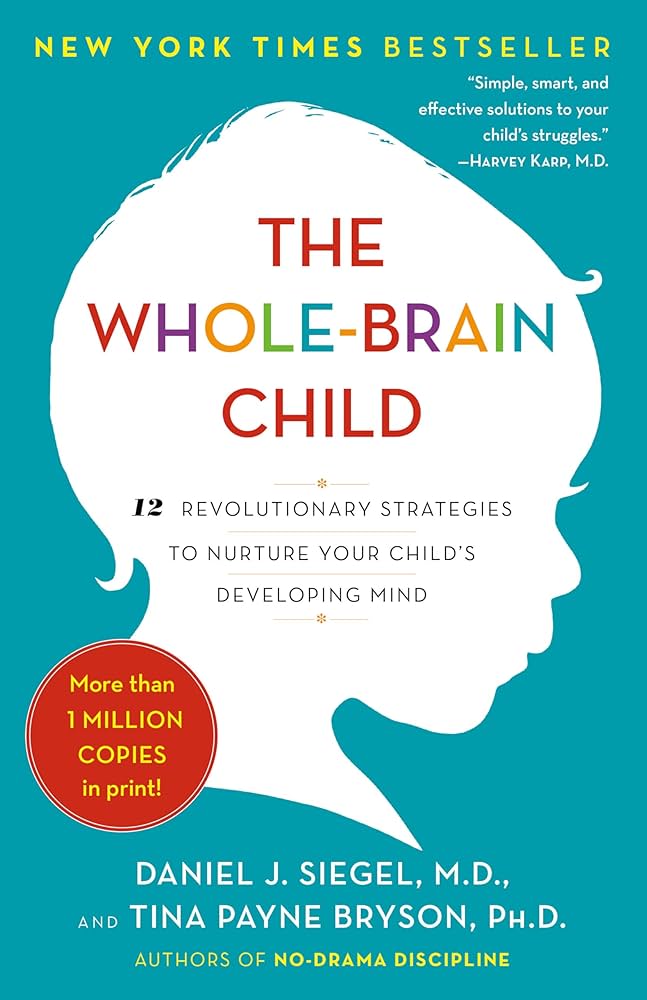
The Whole-Brain Child: Fostering Healthy Brain Development in Children
By Daniel J. Siegel and Tina Payne Bryson
Introduction to Whole-Brain Parenting
Parenting can be a challenging journey, but understanding how to nurture your child's brain development can make a significant difference. In their groundbreaking book, The Whole-Brain Child, Daniel J. Siegel and Tina Payne Bryson provide practical strategies for parents to help their children develop a well-integrated brain. This article delves into the core concepts of the book, offering valuable insights and tips for whole-brain parenting.
Key Concepts of The Whole-Brain Child
1. Integration: The Cornerstone of Brain Development
One of the central ideas in The Whole-Brain Child is the concept of integration. Integration involves linking different parts of the brain to work together harmoniously. When different regions of the brain collaborate effectively, children can lead balanced and resilient lives.
The Left and Right Brain
Left-brain functions are logical, analytical, and organized, while the right brain handles emotions, creativity, and intuition. Helping children integrate both hemispheres can foster balanced thinking and emotional regulation.
The Upstairs and Downstairs Brain
The upstairs brain (cerebral cortex) is responsible for higher-order thinking, planning, and decision-making, whereas the downstairs brain (limbic system) manages basic functions, emotions, and instincts. Integration between these areas is crucial for emotional regulation and impulse control.
2. The 12 Strategies for Whole-Brain Parenting
Siegel and Bryson outline 12 practical strategies to promote brain integration in children. These strategies are designed to help parents nurture their child's emotional and intellectual development.
Connect and Redirect
When a child is upset, connect with their emotions first before redirecting to logic and problem-solving. This approach helps in calming the child's right brain before engaging their left brain.
Name It to Tame It
Encouraging children to name their emotions can help tame overwhelming feelings. Labeling emotions activates the left brain and helps to integrate it with the right brain.
3. Understanding and Managing Big Emotions
Children often experience big emotions that can be challenging to manage. By understanding the brain's role in these emotions, parents can better support their children.
The Role of Mirror Neurons
Mirror neurons allow children to reflect the emotions and actions of others. By modeling calm behavior, parents can influence their child's emotional responses.
The Importance of Empathy
Empathy plays a crucial role in helping children manage their emotions. When parents validate their children's feelings, it helps the child feel understood and supported, which in turn fosters emotional resilience.
4. Building a Resilient Brain
Resilience is the ability to bounce back from adversity. The strategies outlined in The Whole-Brain Child aim to build resilience in children by promoting brain integration.
Developing a “Yes Brain”
A “Yes Brain” is a brain that is open, receptive, and ready to learn. Encouraging curiosity, creativity, and a positive outlook helps children approach challenges with confidence and resilience.
The Role of Play
Play is essential for healthy brain development. It helps children develop social skills, creativity, and problem-solving abilities. Through play, children learn to navigate the world and build resilience.
Tables for Quick Reference
| Strategy | Description |
|---|---|
| Connect and Redirect | Connect with the child's emotions before redirecting to logic. |
| Name It to Tame It | Help the child name their emotions to manage them better. |
| Engage, Don't Enrage | Communicate with the child in a way that engages rather than enrages. |
| Use the Upstairs Brain | Encourage higher-order thinking and problem-solving. |
Conclusion: The Impact of Whole-Brain Parenting
Understanding and applying the principles of The Whole-Brain Child can significantly impact your child's development. By fostering brain integration, parents can help their children develop emotional resilience, creativity, and problem-solving skills. For more insights and practical tips on parenting, visit our website and blog.



